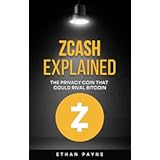The financial world stands at a pivotal moment, with traditional institutions increasingly acknowledging and integrating digital assets. The video above provides a compelling overview of this monumental shift, describing it as a “tsunami” of capital heading towards Bitcoin and Ethereum. This shift is not merely speculative but is driven by a profound re-evaluation of value and infrastructure by some of the most influential figures in global finance.
For decades, conventional wisdom dictated that digital currencies were speculative, risky, or simply a distraction. However, as the global economic landscape continues to evolve, the narrative around Bitcoin and Ethereum is undergoing a dramatic transformation. This post delves deeper into the forces at play, expanding on the video’s insights to illuminate why leading minds are now openly embracing these digital assets as foundational elements of our financial future.
BlackRock’s Pivotal Shift: Bitcoin’s Evolution from Skepticism to Legitimacy
Larry Fink, the Chairman and CEO of BlackRock, once dismissed Bitcoin. This stance was reflective of a broader skepticism within traditional finance regarding digital assets. However, as highlighted in the video, Fink has undergone a dramatic reversal, now openly admitting his previous error and recognizing Bitcoin as a legitimate component of the financial system. His journey from skeptic to advocate underscores a significant institutional awakening to the potential of digital assets.
BlackRock’s commitment became undeniable with the launch of its spot Bitcoin ETF in early 2024. This product quickly became one of the fastest-growing exchange-traded funds in history, absorbing billions in inflows within weeks. By mid-2025, it had solidified its position as a primary vehicle for large institutions like pensions, endowments, and sovereign funds seeking regulated exposure to digital assets. This move by the world’s largest asset manager paved the way for trillions of dollars in global capital to find its first compliant path into Bitcoin.
Fink’s description of Bitcoin as a “currency of fear” provides critical insight into its growing adoption. In a world grappling with record government debt, persistent inflation, and the debasement of traditional currencies, investors are increasingly seeking alternatives to preserve long-term wealth. Bonds offer diminished real yields, while real estate faces various headwinds. Bitcoin, with its inherent scarcity and growth potential, offers a compelling hedge against these macroeconomic uncertainties. This perspective elevates Bitcoin beyond mere speculation, positioning it as an institutional-grade insurance policy against systemic financial risks.
Ethereum: The Digital Infrastructure Revolution for a New Economy
While Bitcoin gains traction as digital gold, Ethereum is emerging as the foundational digital infrastructure for a new global economy. Joseph Chalom, a senior BlackRock executive, articulated a clear valuation model for Ethereum, noting its market capitalization has historically increased by roughly $1 for every $2 of high-quality liquid assets secured on its network. These assets include stablecoins, tokenized real-world assets (RWAs), and decentralized finance (DeFi) applications built on reliable collateral. This direct relationship links Ethereum’s utility and adoption directly to its market value, appealing strongly to institutional investors who analyze capital flows and balance sheets.
The growth of stablecoins exemplifies this trend. Currently totaling around $275 billion, forecasts from Secretary Besent suggest this figure could exceed $2 trillion. In countries experiencing rapid currency devaluation, dollar-backed stablecoins are already becoming essential for everyday transactions. Payment giants like PayPal and Visa are actively integrating stablecoins into their networks, signaling a future where programmable digital dollars are a standard part of global commerce.
Tokenized real-world assets represent an even larger opportunity. Estimates from Boston Consulting Group project the tokenized asset market to reach between $4 trillion and $16 trillion by 2030, a substantial increase from today’s $30 billion. Global government bonds exceed $120 trillion, while equity markets surpass $100 trillion, with derivatives reaching into the quadrillions. Even a modest fraction of these assets moving onto blockchain infrastructure, with Ethereum securing a significant portion, would create immense demand for its native asset. This demand arises from the network’s need for security, transaction fees, and collateral, all of which depend on Ethereum.
Major institutions, including J.P. Morgan, have been leveraging Ethereum-based private networks for over a decade. This demonstrates a deep, long-standing belief in the technology’s potential to underpin future financial systems. Joe Lubin, co-founder of Ethereum, envisions a future where Wall Street actively stakes Ethereum, runs validators, builds on Layer 2 and Layer 3 solutions, and utilizes smart contracts to encode complex financial agreements. He boldly predicts Ethereum could “likely 100x from here,” seeing it as the fundamental commodity of decentralized trust essential for a new global digital economy.
The “1971 Moment” for Ethereum: A Paradigm Shift
Tom Lee, co-founder of FundStrat, draws a compelling parallel between Ethereum’s current trajectory and the “1971 moment” when President Nixon ended the convertibility of the US dollar into gold. That decision unleashed an era of unprecedented financial innovation, credit expansion, and new market formations. Lee argues Ethereum now stands at a similar crossroads, transitioning from a speculative asset to a vital settlement network for trillions of dollars in assets and programmable finance. This structural shift, he contends, sets the stage for a historic repricing of the asset.
Just as the removal of the gold peg liberated monetary policy and spurred the growth of derivatives and foreign exchange markets, Ethereum’s development as a digital settlement layer promises to unlock new forms of financial activity. Stablecoins will function as programmable money, tokenized securities as digital credit, and artificial intelligence models will interact with both on-chain. The more these intricate systems rely on Ethereum’s robust infrastructure, the greater the demand for its native token. This framework provides institutional investors with a clear, fundamental rationale for valuing Ethereum based on real-world utility and adoption, rather than mere market sentiment.
The Unstoppable Convergence: Bitcoin and Ethereum as Allies
The traditional narrative often frames Bitcoin and Ethereum as competitors. However, the insights from Larry Fink, Joseph Chalom, and Joe Lubin reveal a powerful convergence. These networks address different but complementary weaknesses within the existing financial system. Bitcoin offers a robust response to the fear of monetary debasement and a hedge against sovereign risk, while Ethereum tackles the loss of trust in financial processes by providing a transparent, programmable, and secure infrastructure.
Together, they form a twin engine attracting capital from two distinct directions: Bitcoin as a store of value and Ethereum as financial infrastructure. This synergy means Bitcoin holders can utilize Ethereum for yield and advanced settlement, while Ethereum can leverage wrapped Bitcoin as long-term collateral. Their interaction strengthens both networks, creating a more resilient and versatile digital financial ecosystem. This convergence is supported by data, with spot ETFs now holding nearly 5% of Ethereum’s supply and BlackRock’s Bitcoin ETF becoming one of the largest financial products ever launched.
The Supply Squeeze: Corporate Treasuries and ETF Inflows
Beyond direct institutional adoption, a significant supply squeeze is underway for both Bitcoin and Ethereum, which further amplifies their valuation potential. Corporate treasuries are increasingly accumulating these digital assets as a strategic move to protect balance sheets from inflation and currency erosion, mirroring MicroStrategy’s early Bitcoin strategy. BitMine Immersion, for example, has accumulated over 1.86 million Ethereum, valued at more than $8 billion, representing approximately 1.5% of the total supply, with a stated goal of reaching 5% ownership. This scale of accumulation is not speculative trading but a deliberate, long-term treasury strategy.
This trend positions firms early in front of a potential revaluation and provides a stake in the infrastructure that may underpin future business operations. Ethereum, in particular, appeals to treasuries due to its blend of scarcity and utility. The same network serving as a reserve asset also powers crucial business functions, from stablecoin payments to tokenized invoices. This dual function could drive widespread adoption across finance, logistics, and technology sectors.
Simultaneously, regulated investment products, such as spot Ethereum ETFs, are absorbing billions of dollars and removing a notable percentage of circulating tokens from the open market. When corporate treasuries accumulate assets while ETFs attract significant institutional and retail inflows, the tradable float dramatically declines. Coupled with Ethereum’s periodically deflationary issuance mechanism (due to transaction burn), this reduced supply alongside expanding demand creates textbook conditions for sustained price pressure and higher valuations for both Bitcoin and Ethereum.







